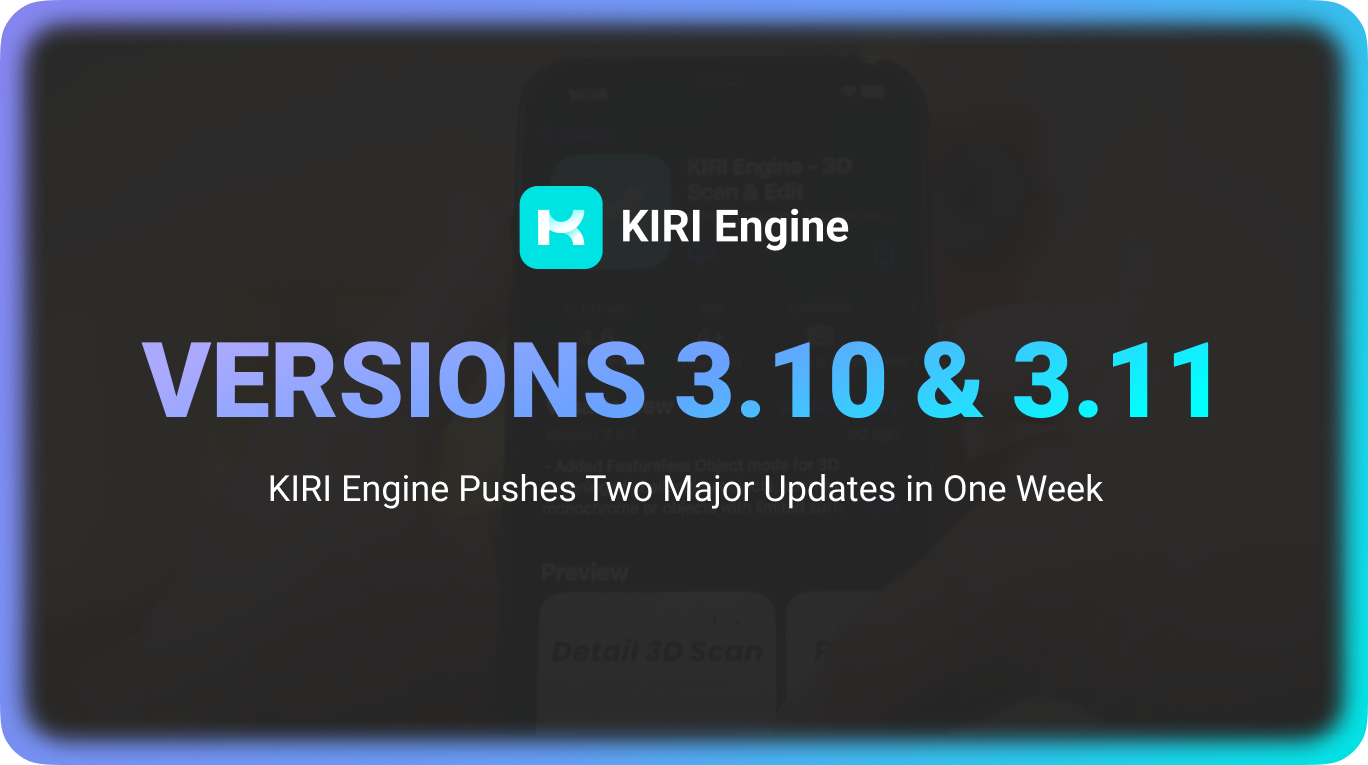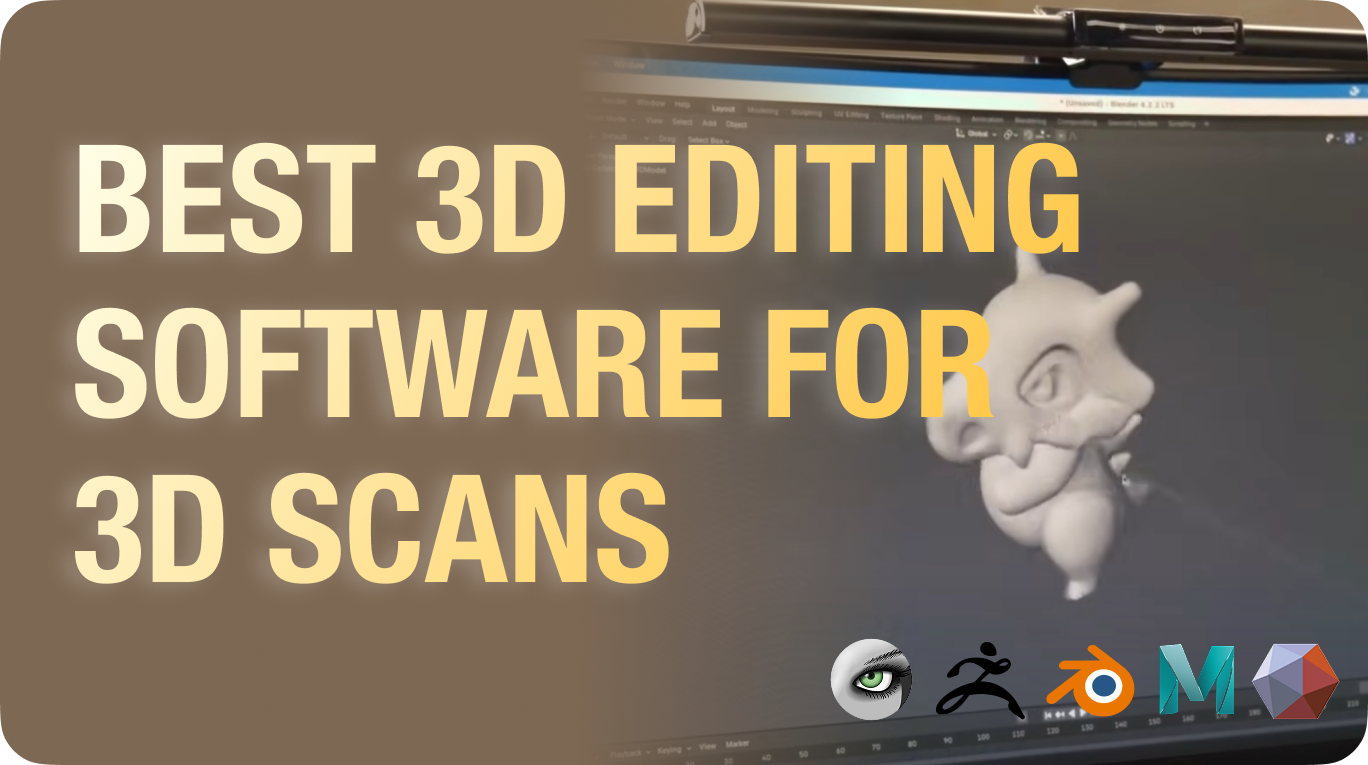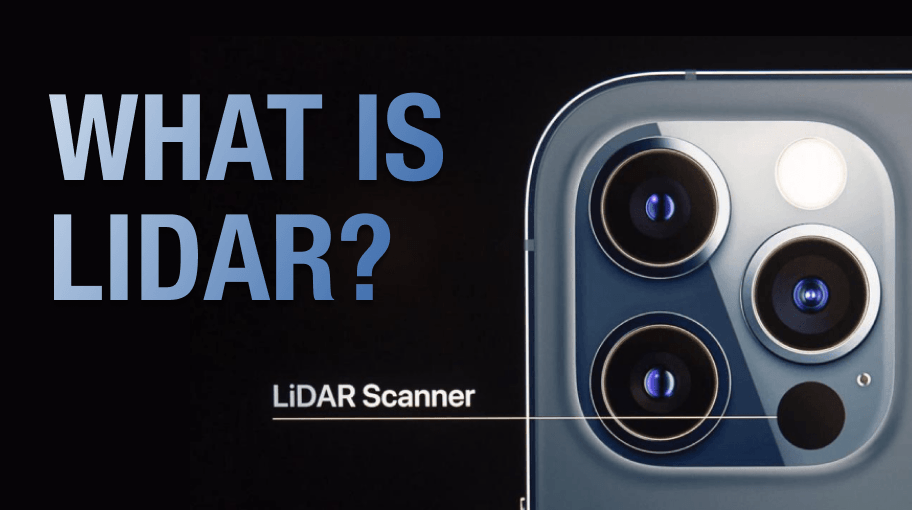KIRI Engine Introduces Featureless Object Mode, Revolutionizing 3D Scanning with Neural Surface Reconstruction
Scan the impossible with KIRI Engine’s new Featureless Object Mode! Powered by Neural Surface Reconstruction, this breakthrough technology lets you capture shiny, reflective, and low-detail objects like never before.
Today, we are proudly announcing the launch of our groundbreaking Featureless Object Mode in the KIRI Engine APP. Powered by Neural Surface Reconstruction (NSR) technology, this innovative mode redefines the possibilities of 3D scanning, particularly for objects with fewer features points and challenging surface characteristics, including shiny and reflective surfaces.
Traditional photogrammetry has long been a popular method for 3D scanning. By capturing photos of an object from various angles and using the algorithm, photogrammetry enables the generation of detailed 3D models with impressive textures and colors. It offers a versatile solution for capturing the visual appearance of objects and scenes.
 F2: A KIRI user’s photogrammetry scan of a rock (abundant feature points)
F2: A KIRI user’s photogrammetry scan of a rock (abundant feature points)
However, traditional photogrammetry has limitations. It heavily relies on the identification and tracking of distinct visual features in the photos, which means to get the best results, one object must be in good lighting and have complex features.
While traditional photogrammetry excels at producing high-quality textures and colors, it may not always be the ideal choice when encountering objects with fewer features points. Objects with shiny/reflective surfaces pose a great challenge for traditional photogrammetry as the algorithm struggles to determine specific features points for compiling sufficient details to generate an adequate model. Thus, to counter this existing issue, KIRI Innovations have developed its Featureless Object Mode utilizing NSR technology.
Similar to traditional photogrammetry, NSR (Neural Surface Reconstruction) analyzes a series of photos captured from various angles around an object. However, instead of relying on the identification of common features in overlapping photos, NSR employs a Multilayer Perceptron, also known as a Neural Network, to anticipate the appearance of the object from any viewpoint and direction based on the available set of overlapping photos and in turn, to reconstruct the surface mesh. As an innovative AI-driven option for 3D scanning, NSR offers an alternative to traditional photogrammetry or LiDAR techniques. NSR technology employs a neural network to generate and refine a volumetric representation of a scene using a collection of source images. With the generated volumetric representation, NSR scans have the capability to be transformed into a 3D mesh, providing a viable alternative to photogrammetry in the realm of 3D scanning, accounting for objects with fewer features points and shiny/reflective surfaces.
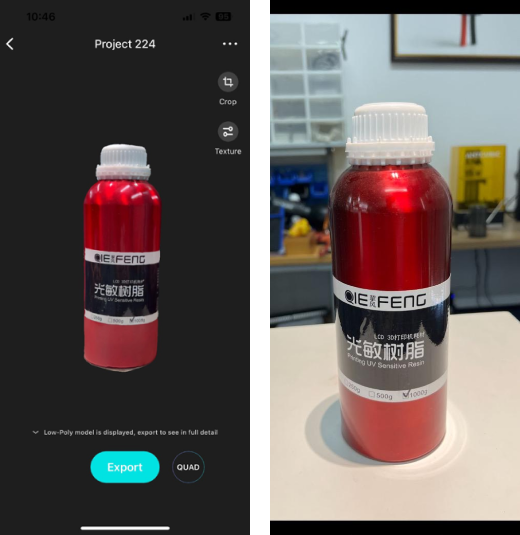
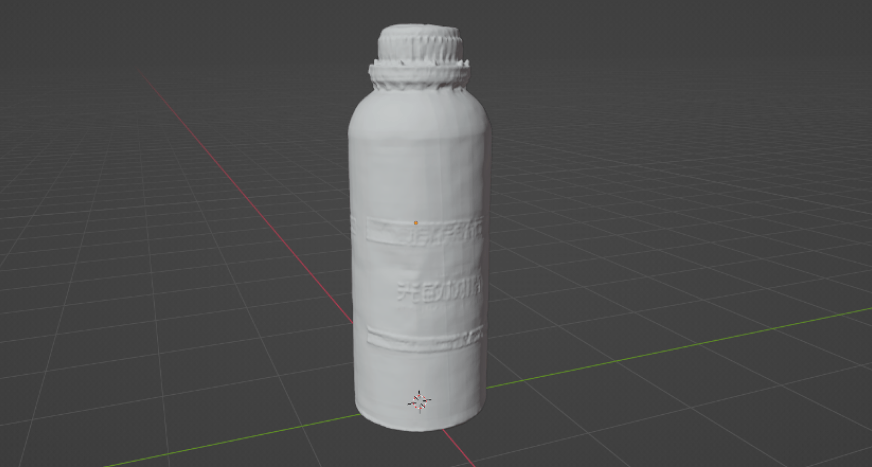
Having integrated NSR technology to the KIRI Engine APP, users are granted the ability to choose the most optimal method for their designated scans. Traditional photo taking and uploading high quality image batches works wonderfully for objects with abundant features points, while the NSR based featureless object mode allows the user to scan objects with fewer features points. When utilizing the latter technology, one will be recording a video slowly around the object with three essential layers: top, middle, and bottom.
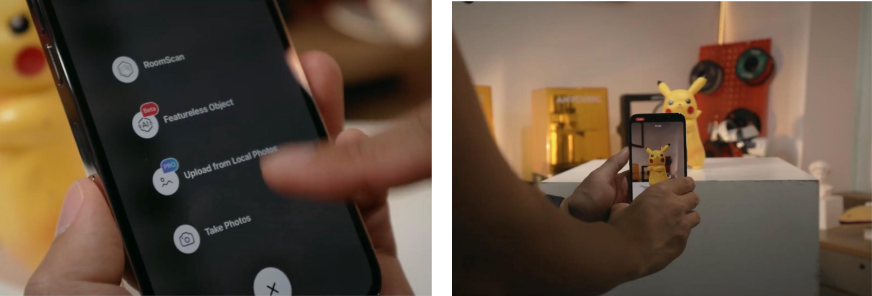
The cloud based algorithm then takes in this footage to analyze its characteristics, and generates a model based on the video. The freedom to maneuver within the application allows users to find the best approach to create their 3D scans.
 (Featureless Object Mode generated mesh & textures)
(Featureless Object Mode generated mesh & textures)
To learn more about the Featureless Object Mode, NSR, and the power of the KIRI Engine, Please refer to this video: https://youtu.be/f6vuY-RJtq8.
